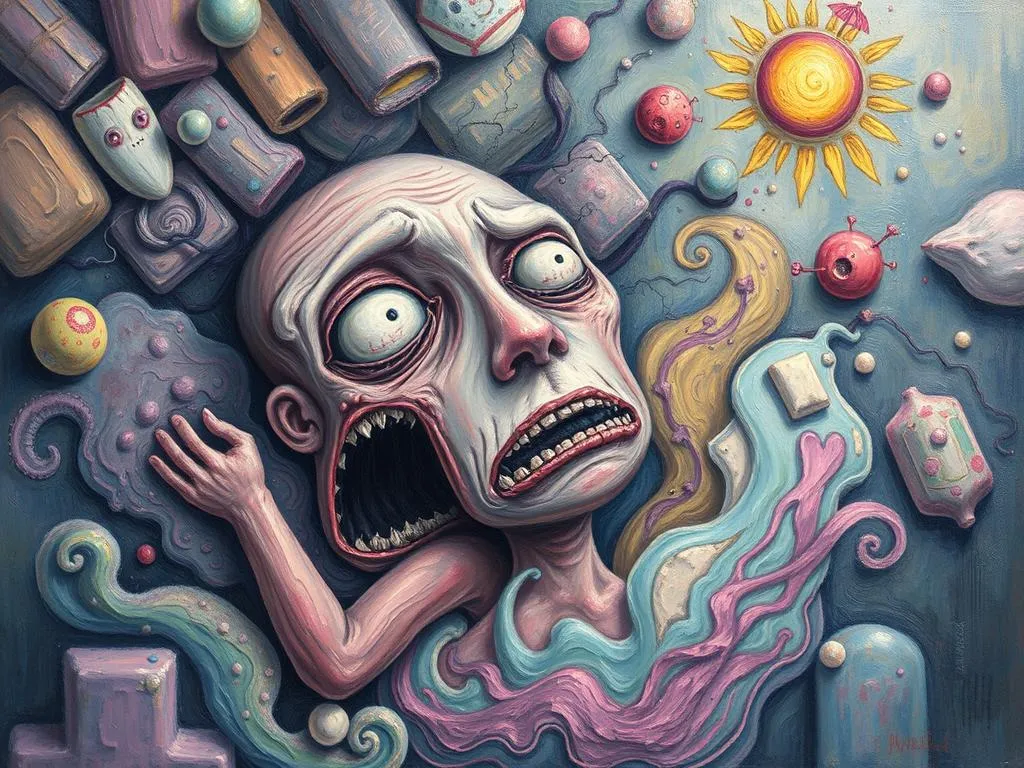
Dreams have always fascinated humanity, serving as a bridge between our conscious and unconscious minds. Among the myriad of dreams we experience, painful dreams stand out, often leaving us with a lingering sense of discomfort upon waking. These dreams can be unsettling, and their intensity often provokes a desire for understanding. Why do we dream of pain? What messages are hidden within these nightmares, and how can we interpret them? In this article, we will delve into the symbolism, scenarios, and real-life connections associated with painful dreams, offering insights that may help you unravel the meaning behind your own nocturnal agonies.
Symbolism and Meaning
When we explore painful dreams, we encounter a rich tapestry of symbols that can illuminate our emotional and psychological states. One of the most common symbols is pain itself, which can represent various forms of distress or unresolved issues in waking life. Pain in dreams may manifest physically, such as feeling a stabbing sensation or experiencing pressure, or it may be emotional, reflecting feelings of loss, betrayal, or anxiety.
Physical pain in a dream often correlates with actual physical discomfort in waking life. The mind can express physical sensations through dreams, serving as a warning signal that something in your body requires attention. Conversely, emotional pain in dreams may symbolize unaddressed feelings or traumatic experiences. For instance, dreaming of losing a loved one can signify lingering grief or the fear of abandonment. This emotional representation urges us to confront our feelings rather than suppress them.
Moreover, agony can symbolize personal growth. Just as physical pain often precedes healing, emotional turmoil in dreams can indicate a necessary process of transformation. Dreams that involve enduring pain may signal that you are undergoing significant changes within yourself. These dreams can be a form of catharsis, pushing you to confront difficult truths or to release pent-up emotions.
Examining these symbols, it’s crucial to consider the context of your life. Dreams are inherently personal; the meaning of pain can vary vastly from one individual to another. For some, pain might represent a call to action, while for others, it may reflect feelings of powerlessness or fear. Thus, understanding the nuanced meanings behind these symbols can provide clarity regarding your emotional landscape.
Key Scenarios and Variations
Painful dreams can present themselves in various scenarios, each carrying its own implications. One common scenario is falling, which often evokes feelings of helplessness. Falling dreams can symbolize a loss of control in some aspect of your life—perhaps a relationship, job, or personal goal. The pain associated with falling may amplify feelings of inadequacy or fear of failure.
Another frequent scenario involves being chased. This dream often signifies avoidance—whether of responsibilities, relationships, or unresolved issues. The pain of being pursued may represent the anxiety and stress stemming from these situations. Instead of confronting what you are running from, your subconscious mind manifests this chase as a painful experience, urging you to face your fears.
Dreams of injury or illness are also prevalent. They can serve as potent metaphors for emotional wounds or mental health struggles. If you dream of breaking a limb, it may symbolize feeling incapacitated by circumstances beyond your control. This injury could mirror feelings of vulnerability or a desire for protection. The pain felt in the dream serves to highlight these underlying concerns.
In some cases, painful dreams can take the form of loss, such as losing a loved one or experiencing a breakup. Such dreams can be particularly heart-wrenching, often reflecting real-life grief or fears surrounding loss. The pain in these dreams might indicate unresolved feelings or the need to process grief in a healthier manner.
Each scenario provides a unique lens through which to interpret the emotional turmoil present in painful dreams. Reflecting on your specific experiences and feelings during these dreams can help you decipher their meanings.
Real-Life Connections and Takeaways
Understanding the connection between painful dreams and real-life situations can be a powerful tool for self-reflection. When you wake from a distressing dream, take a moment to jot down your feelings and the emotions connected to the dream. This practice can help you identify patterns or recurring themes, allowing you to address issues that may be manifesting in your waking life.
Consider how the pain experienced in your dream relates to your daily experiences. Are there unresolved conflicts or emotions that require attention? Do you find yourself avoiding certain responsibilities? By examining these questions, you can begin to pinpoint the source of your pain and work towards resolution.
Additionally, practicing mindfulness can be a beneficial approach to managing painful dreams. Engaging in meditation or deep-breathing exercises can help create a sense of calm, reducing anxiety that may lead to distressing dreams. This intentional self-care can also foster a deeper connection to your emotions, allowing you to process pain more effectively.
Another helpful strategy is to keep a dream journal. Documenting your dreams can provide insight into recurring symbols and themes. Over time, you may notice patterns that relate to your emotional state or life circumstances. This awareness can empower you to confront issues that may be contributing to your painful dreams.
Lastly, consider seeking support from a therapist or counselor if your painful dreams persist or significantly impact your daily life. Professional guidance can help you navigate deeper emotional wounds and develop coping strategies.
In conclusion, painful dreams can be a profound reflection of our inner struggles, often serving as a catalyst for personal growth and emotional healing. By exploring the symbolism, scenarios, and connections to our waking lives, we can begin to understand the messages our subconscious is trying to convey. As you navigate your own painful dreams, remember to approach them with curiosity and compassion, allowing yourself the space to reflect and heal. In the process of unraveling the meaning behind the agony, you may discover valuable insights that lead to a deeper understanding of yourself and your journey.







